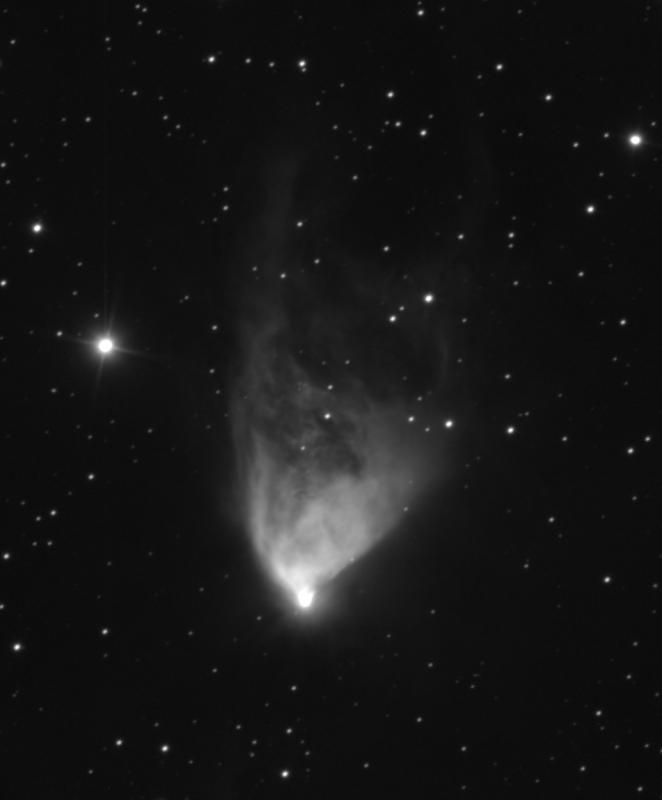Hubble’s nebula
| Common name | Designation | Constellation | Star | RA | Dec |
| Hubble’s nebula | NGC 2261 | Monoceros | R Mon | 6hr 39m 10s | +8° 45’ |

Hubble’s nebula was the first to be discovered (by William Herschel in 1783) and the star R Monocerotis was shown to be variable by Julius Schmidt in 1861. So why Hubble’s nebula? It was Edwin Hubble early in his career at Mount Wilson Observatory who studied photographic plates and spotted the variable appearance of the nebula itself over time. It is very well studied, having been photographed by Carl Lampland at Lowell Observatory from 1919 until 1951. A fine resume of the nature of this nebula by Dr. John Lightfoot can be found at http://adsabs.harvard.edu/full/1989MNRAS.239..665L and a super animation can be enjoyed at https://www.facebook.com/HubblesVariableNebula.
This nebula is bright and accessible through the winter in the UK and is a particularly good introductory test object for the newcomer, before embarking on regular observation of fainter members of the class.
Hubbles Variable Nebula Observations
| The British Astronomical Association supports amateur astronomers around the UK and the rest of the world. Find out more about the BAA or join us. |
